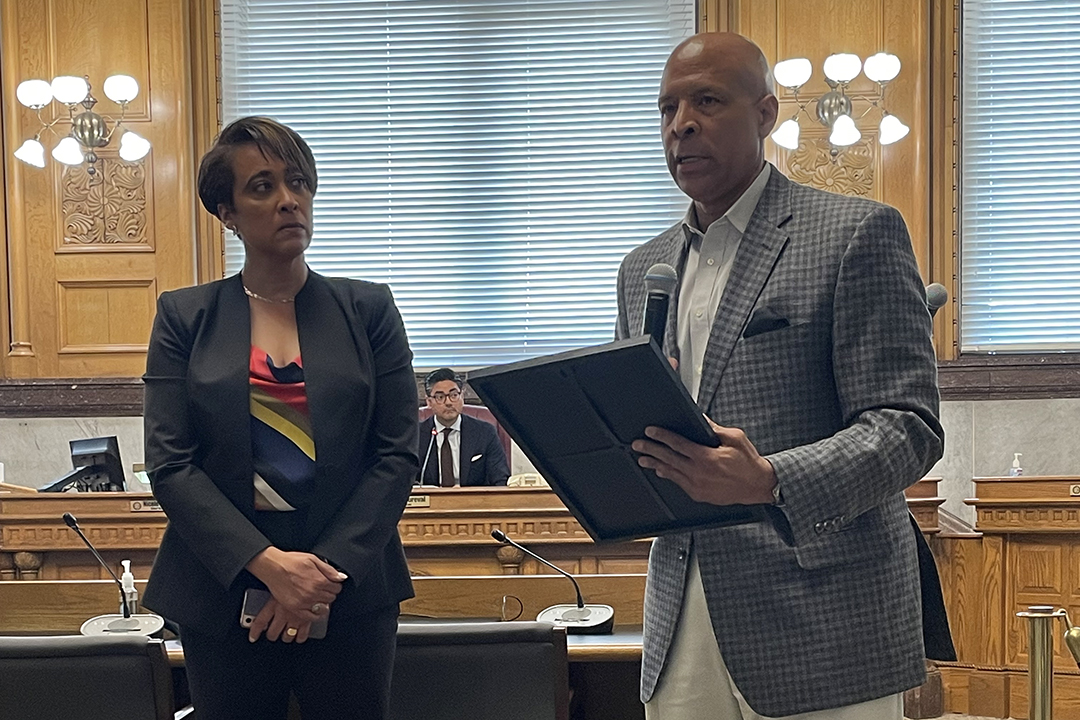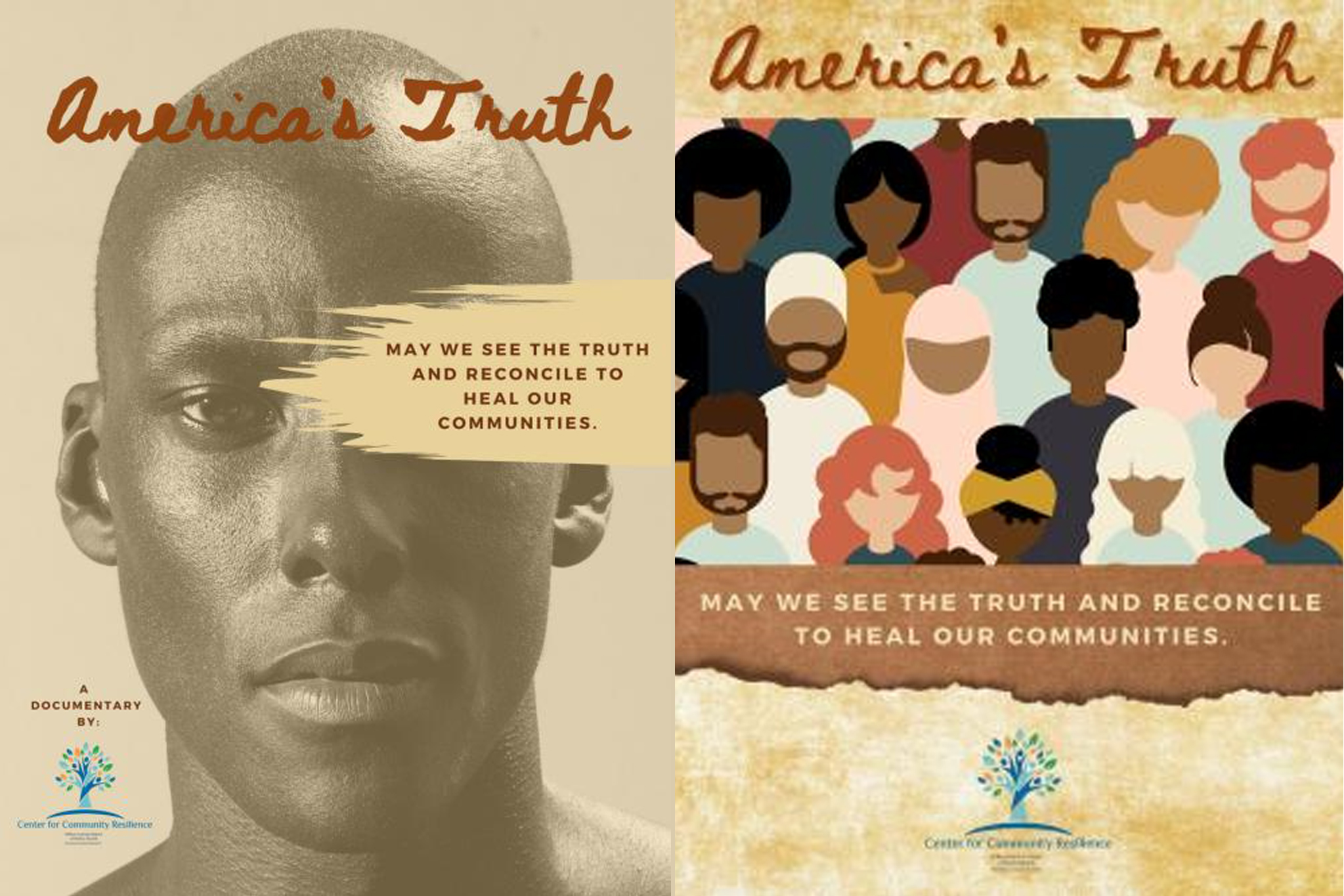Cincinnati’s lower West End neighborhood was a thriving enclave of middle-class Black family life when it was effectively obliterated by the construction of Interstate 75 in 1956, with 2,800 buildings leveled and nearly 26,000 residents displaced in accordance with the city’s 1948 Municipal Master Plan. More than half a century later, the city council formally apologized to residents for that destruction and for the ongoing community trauma that followed.
Present at the resolution of apology, and largely responsible for it, was George Washington University Assistant Professor of Global Health Wendy Ellis. Her documentary, “America’s Truth: Cincinnati,” spurred lawmakers both to the apology itself and to the continuing work of reconciliation and repair that accompany it.
While it was “breathtaking” to see her team’s work recognized by policymakers—an unusual moment of public acclaim for any researcher—Ellis said what truly excited her was the data-driven action Cincinnati has taken and continues to take in guided in part by the Center for Community Resilience’s community-based research. “It’s an example of how work that we do as researchers, as educators, can have real world impact in real time on a huge societal issue that seems intractable and is an integral part of our history,” she said.
Ellis, who also leads GW’s Center for Community Resilience (CCR), released "America’s Truth: Cincinnati" in 2022 as an examination of one city’s history of systemic racism and the trauma inflicted thereby on its Black communities. As part of the making of the film, Ellis and her team at CCR launched Truth and Equity Cincinnati in 2020 in collaboration with Cincinnati academics and lawmakers. Their goal was to develop recommendations for strategic city investments in housing, education, social services and business that could help repair the disparities caused by systemically racist policies. That work has already produced multimillion-dollar investments in affected communities, Ellis said.
Though Ellis is a Cincinnati native going back multiple generations, she said that’s not the only or even the primary reason she chose to focus her documentary there. The city presents a microcosm of many of the United States’ most meaningful hidden histories and enduring conflicts. Ohio was a key stop on the Underground Railroad for enslaved people fleeing to Canada, but it was also one of the first states to enact the Black Codes, which would serve as blueprint legislation for the Jim Crow South. Industrial interests in the city offered work that attracted rural and underprivileged populations, but it was also at the behest of those interests that lower-income communities were destroyed.
This spring, Cincinnati councilmember Scotty Johnson contacted Ellis and told her he planned to advance a resolution of apology from city leadership to former residents of the lower West End. He also invited her to write the accompanying proclamation.
If Ellis had felt the apology was a one-time performance—a reaction to the film with no meaningful work attached—she would have declined, she said. But her team’s three years of work with their Cincinnati community partners convinced her that this was a necessary formal recognition paired with a commitment to further action. “The apology is certainly monumental, but it's what comes next,” she said.
What’s next, Ellis said, is presenting the findings and policy recommendations of ongoing research aimed at helping city leaders identify opportunities for strategic investments aimed at closing the city’s racial wealth and opportunity gap.
The making of “America’s Truth” was revelatory for Ellis, whose subjects often disclosed stories so traumatic that they had never previously discussed them. One man remembered being 6 years old and glancing out the window to see his family’s church being unceremoniously bulldozed. One of Ellis’s relatives informed her that she had an aunt whose home had been destroyed in the West End redevelopment. She never talked about it, the relative said.
“We’re talking about multiple levels of trauma,” Ellis said. “We're talking about the loss of generational wealth, the loss of social cohesion, continuity with regard to education, businesses that are lost, on and on.”
One of the policy’s most enduring impacts landed on homeowners, who Ellis said received “pennies on the dollar” from the government in exchange for their properties. Redlining policies in place at the time made it impossible for many of these families ever to buy another home.
“These are real lives that that were disrupted, not just in that generation, but in multiple generations,” Ellis said.
While “America’s Truth” focused on predominantly Black communities, Ellis said the underlying history affects Cincinnatians of all races. Her next project, undertaken with University of Cincinnati (UC) historian Anne Steinert, will trace the diaspora of people removed from their homes by city redevelopment. The researchers will follow one family from each affected block through 50 years of census data, examining displacement’s effect on their educational attainment, socioeconomic status and overall health.
This is work that can only be done—or at least done well—at a university like GW, Ellis said.
“We as academics are in a position to take a multidisciplinary approach—we use public health, science, law, public policy, systems engineering,” she said. “Collaborators from multiple disciplines make this work possible. That can only happen at a university.”



